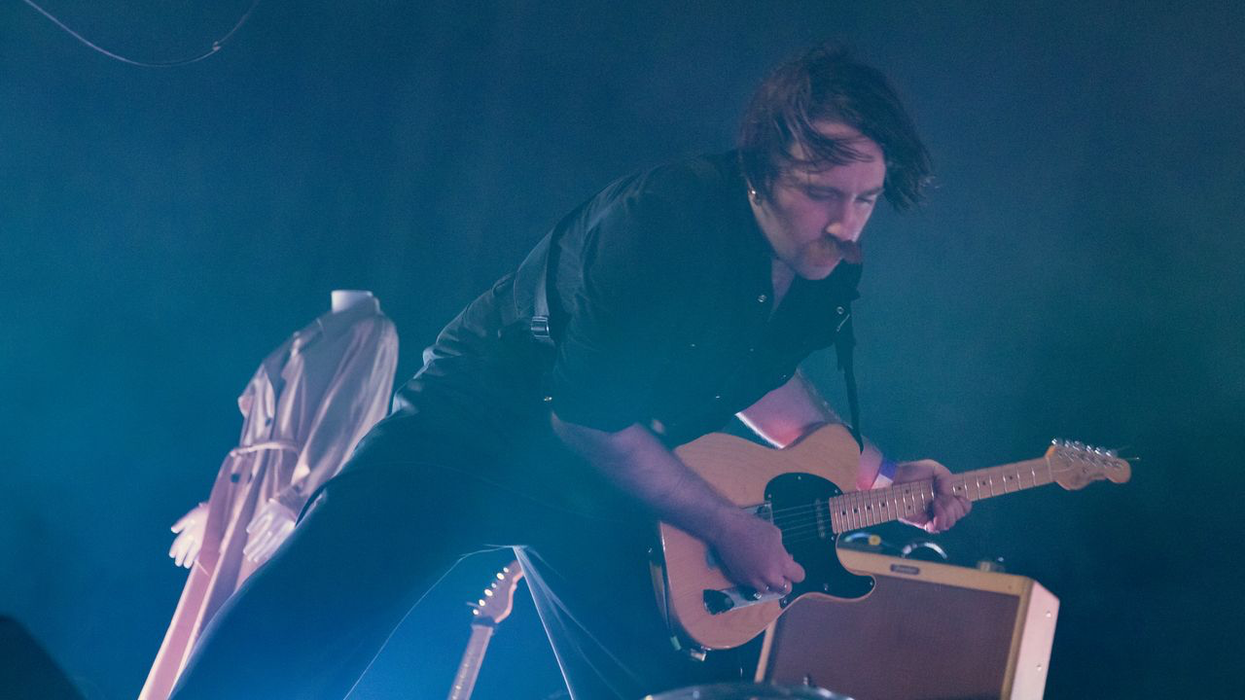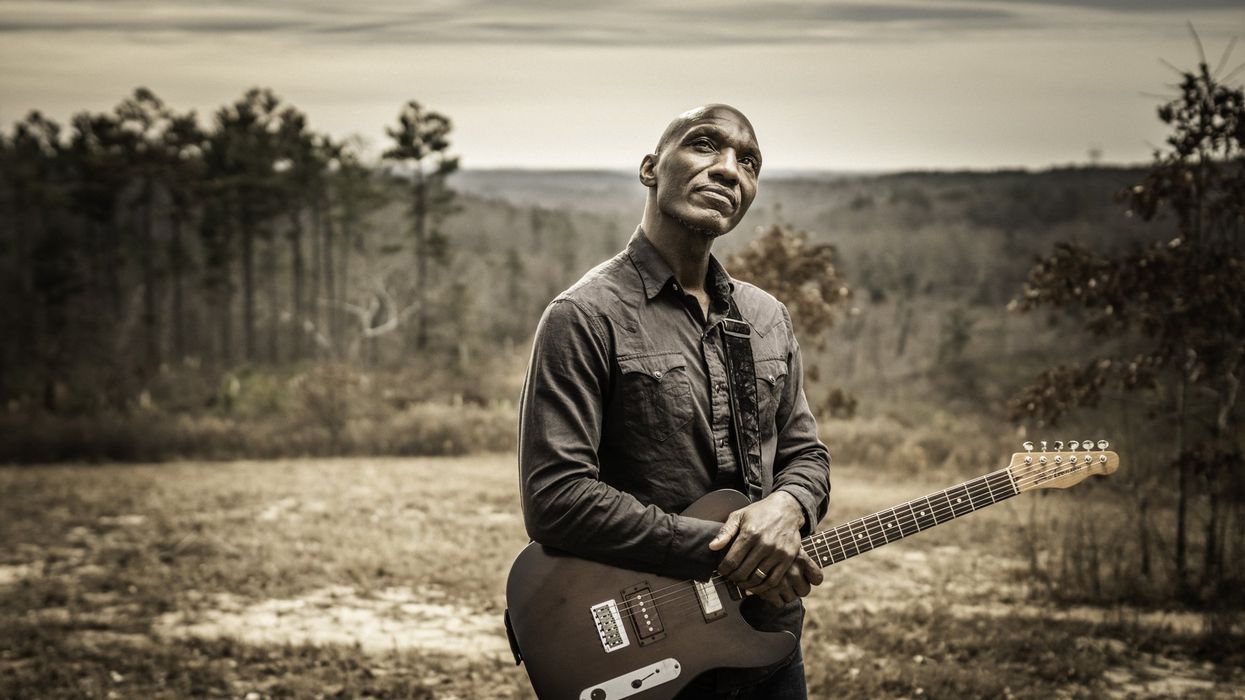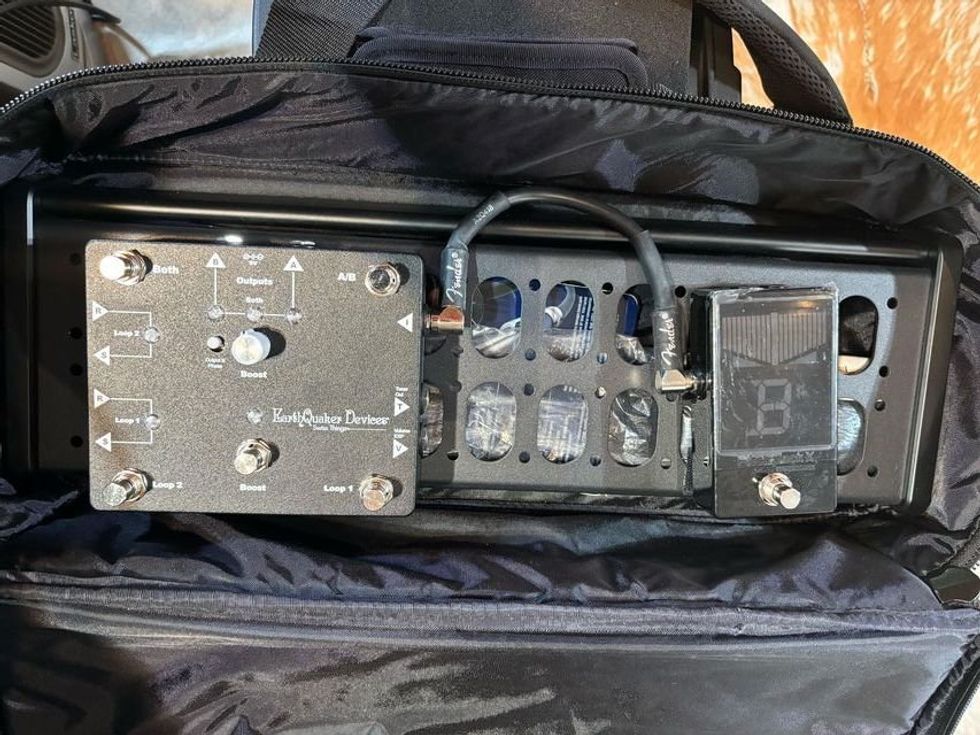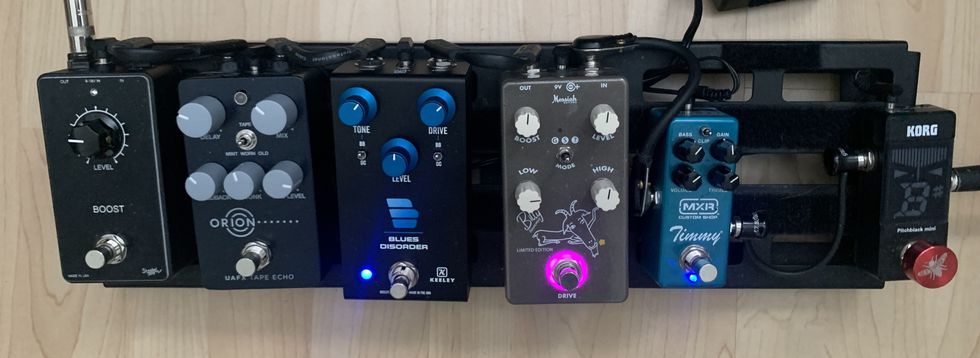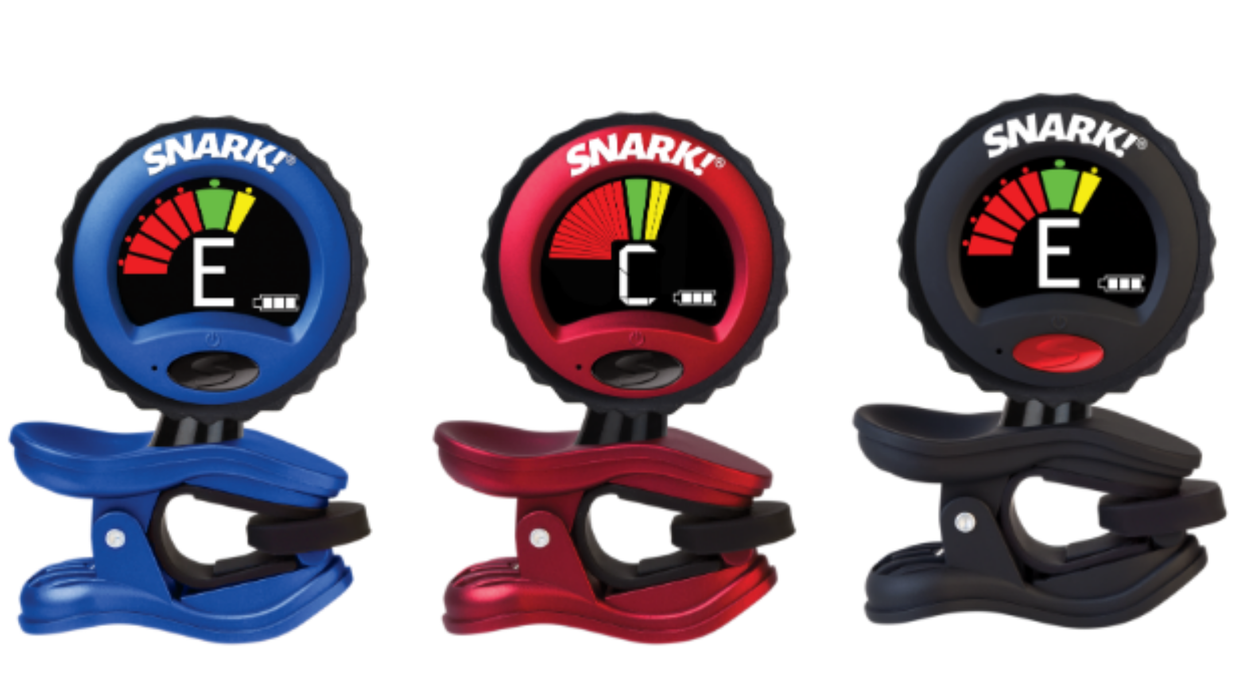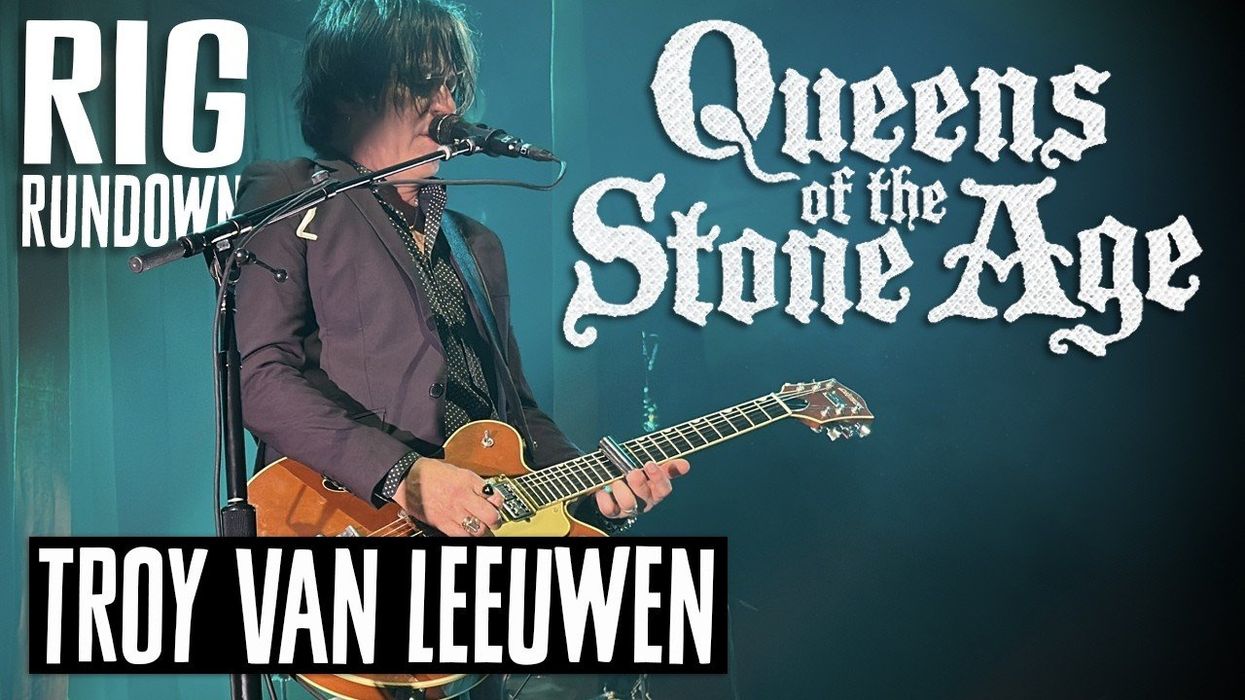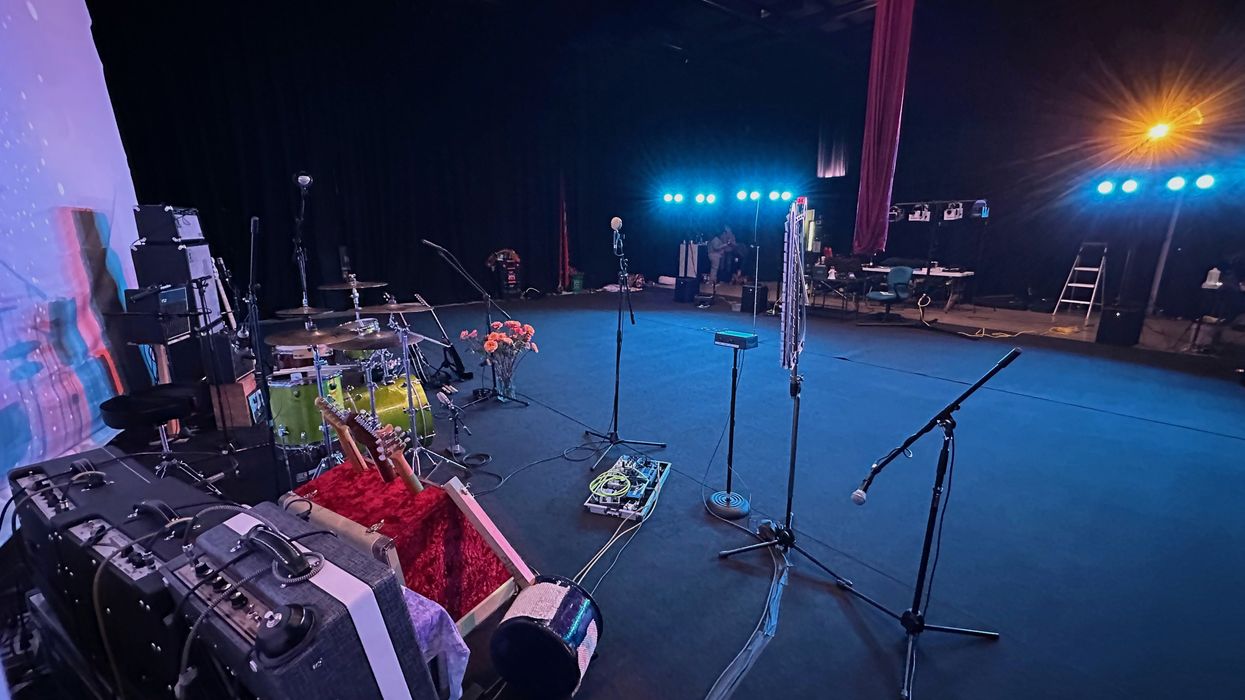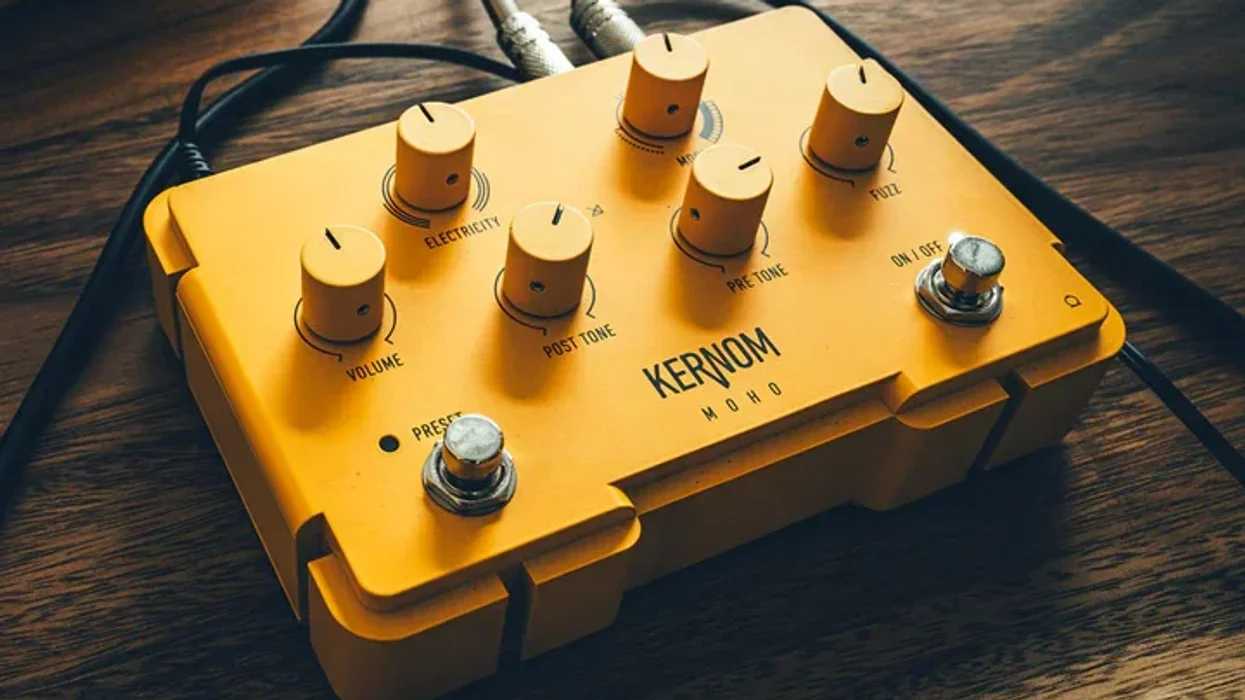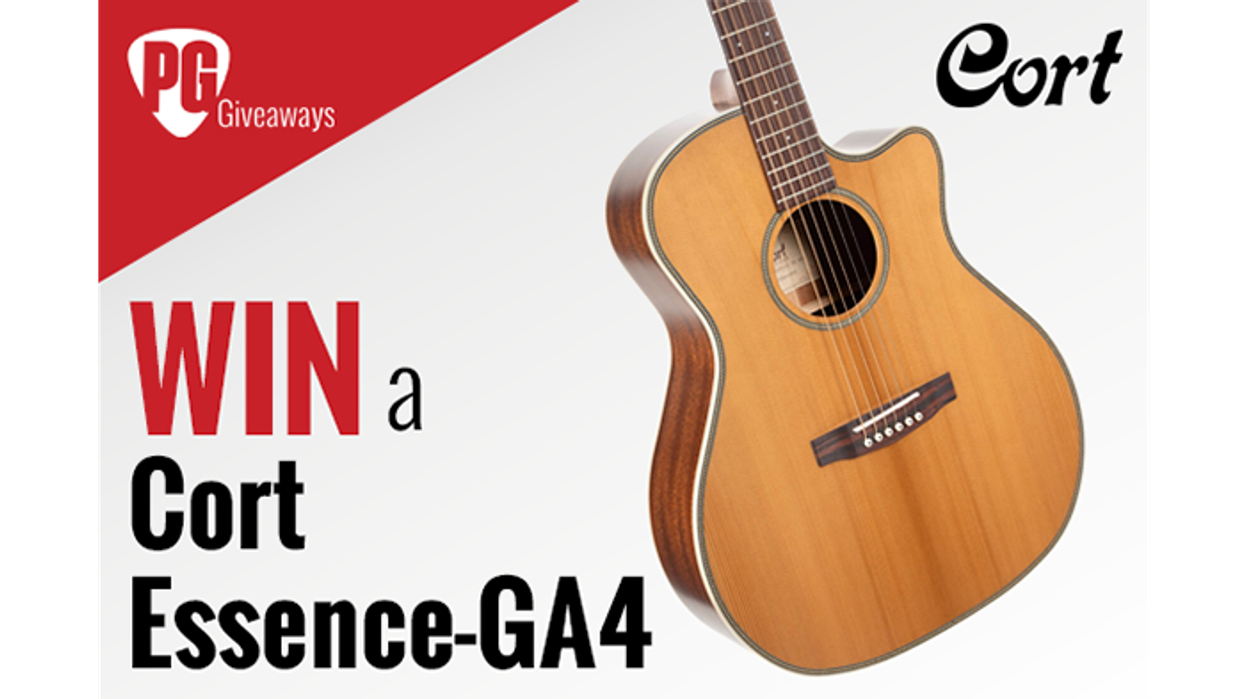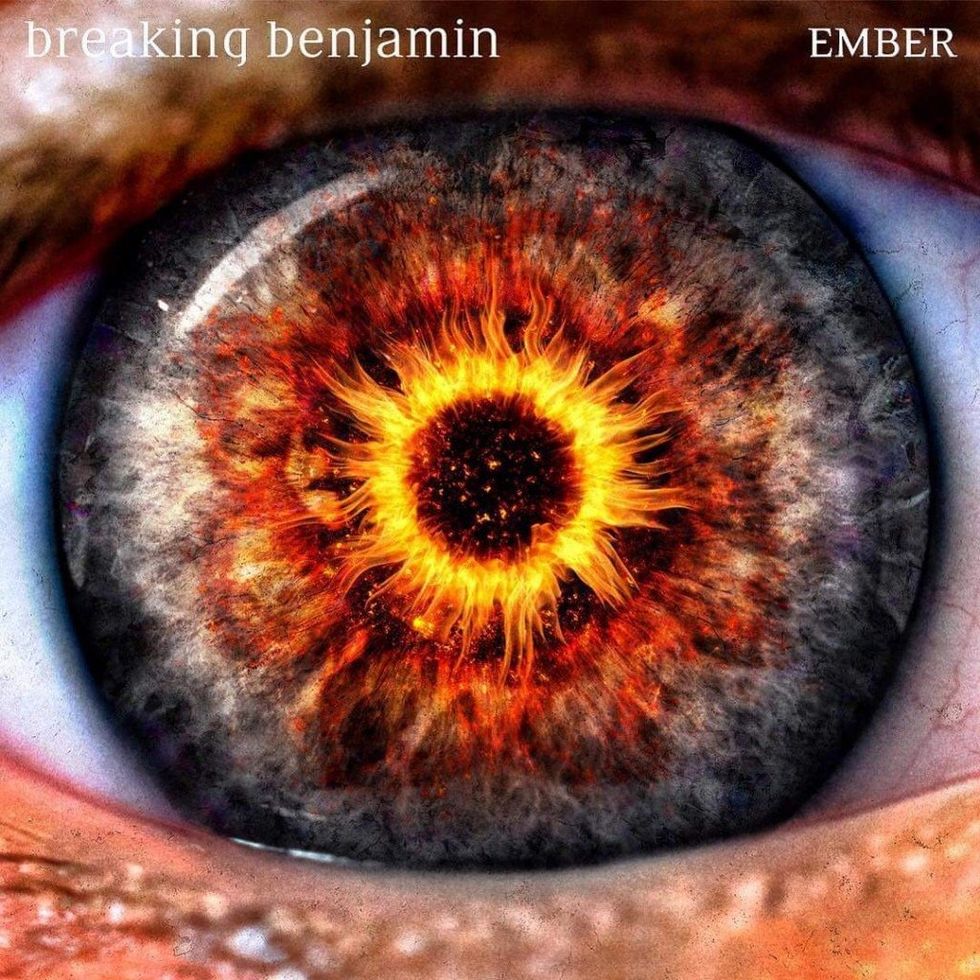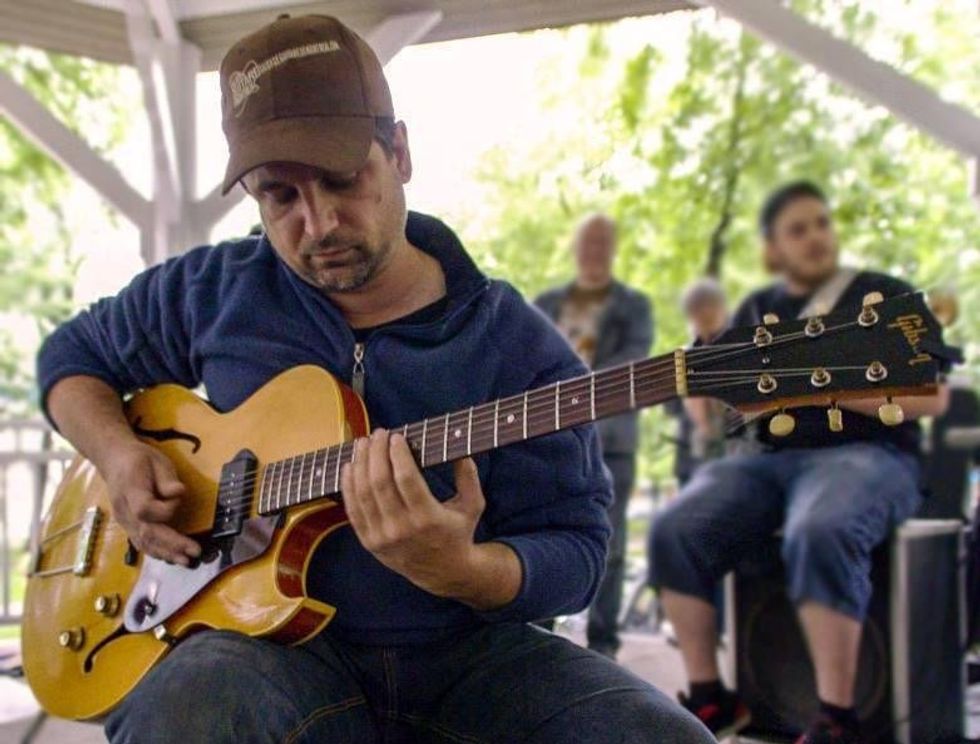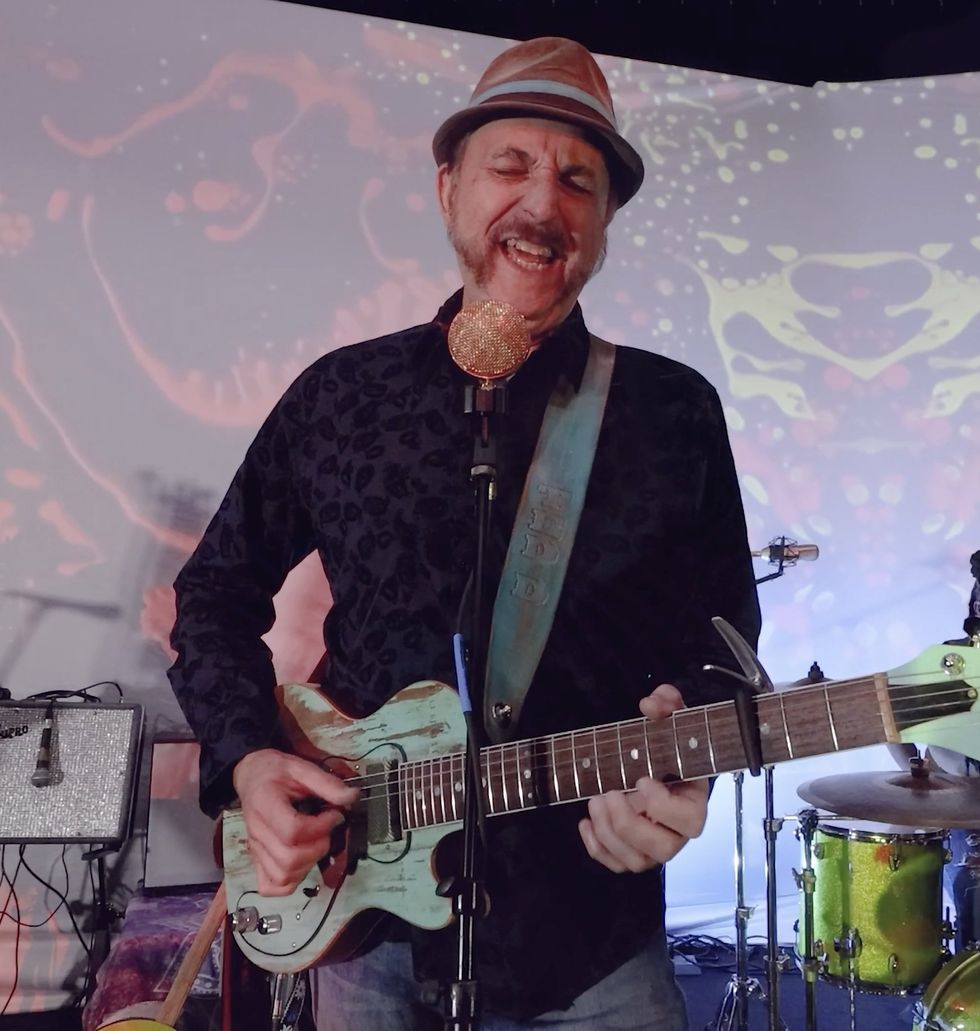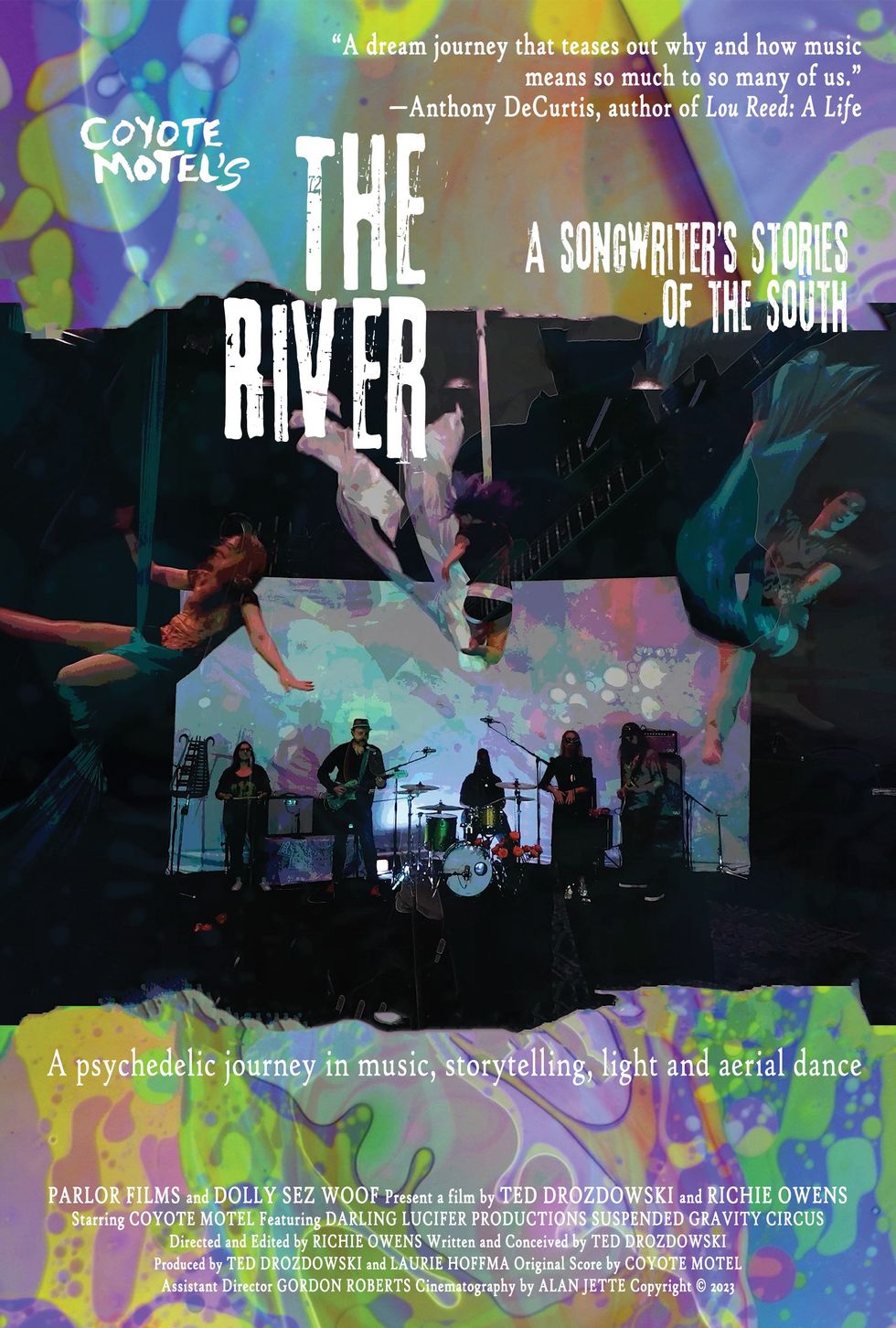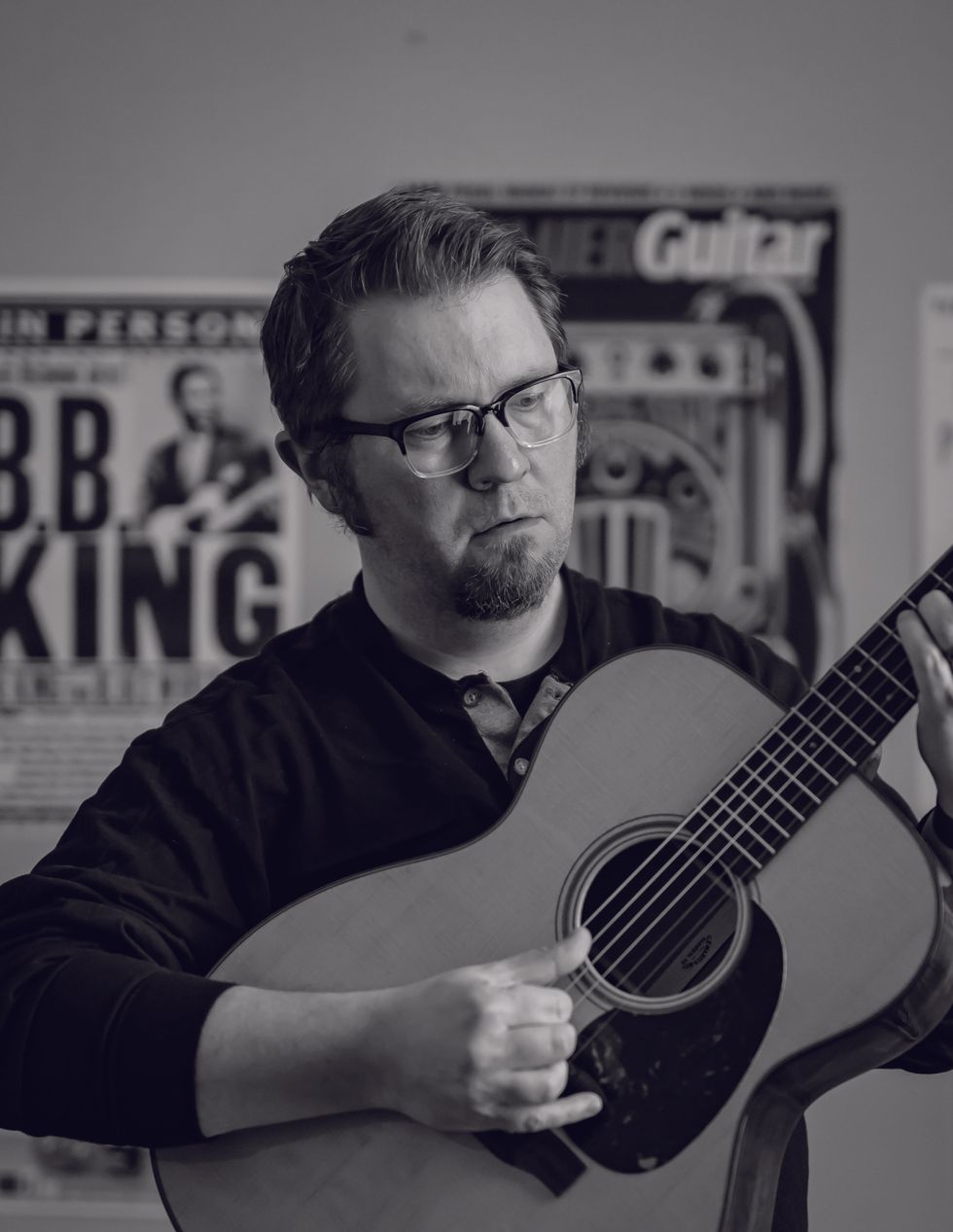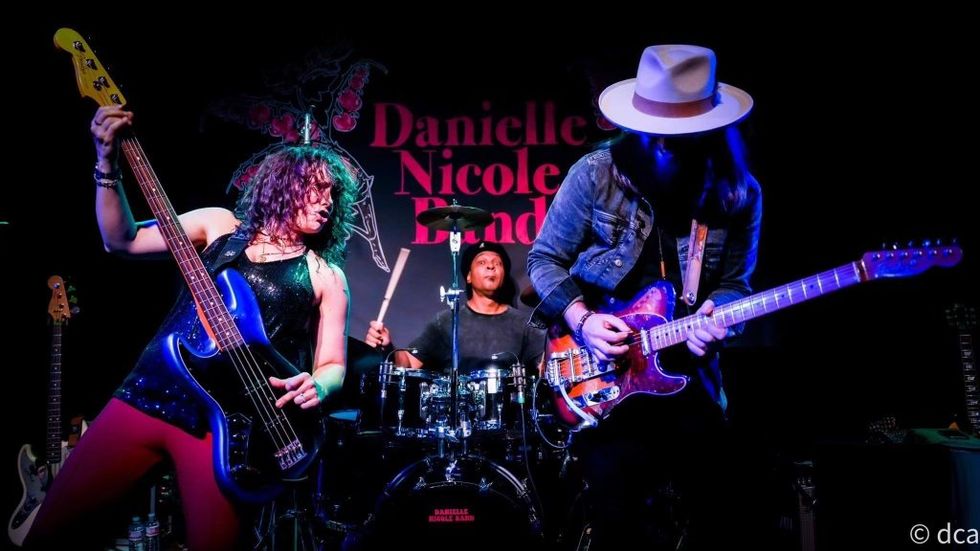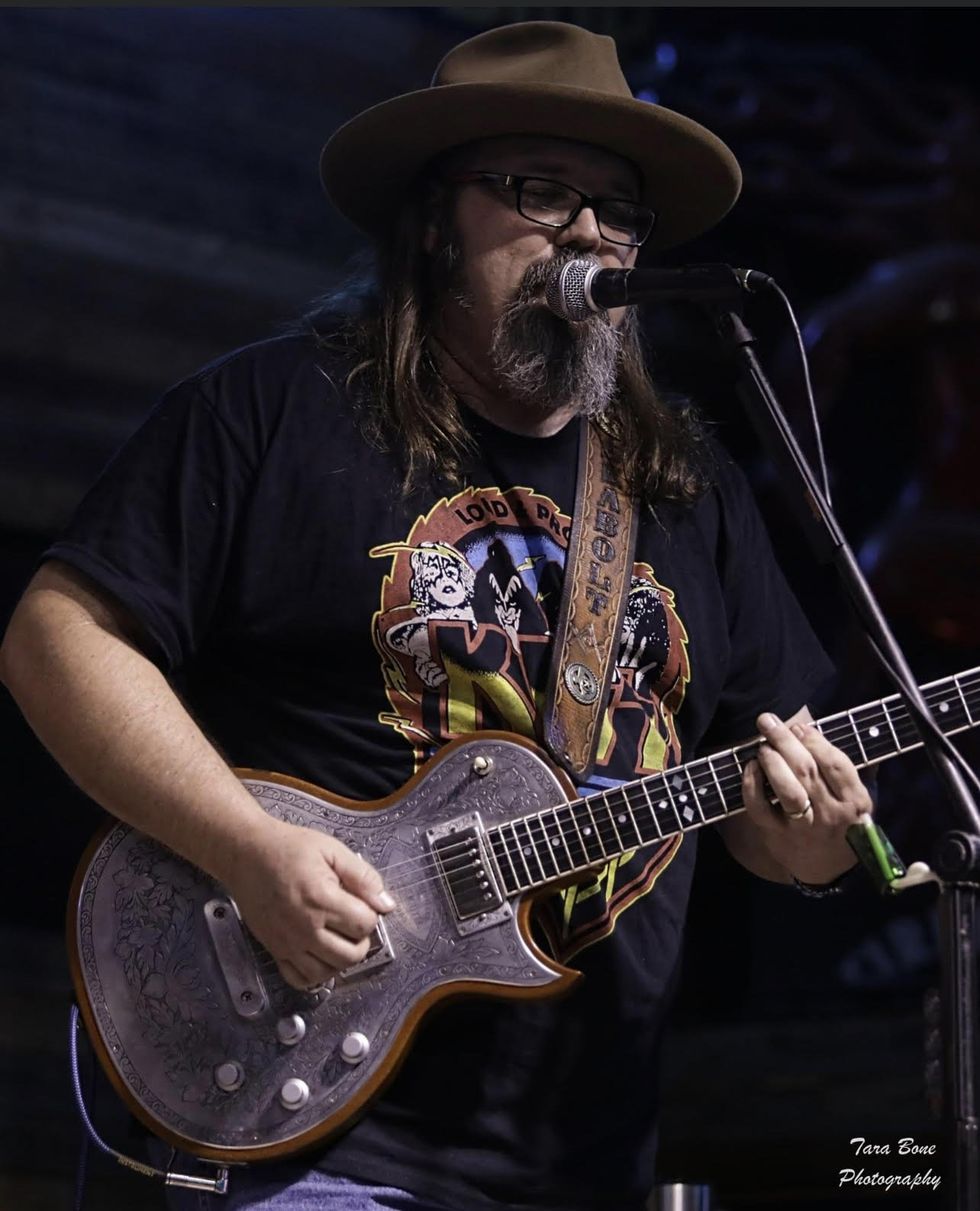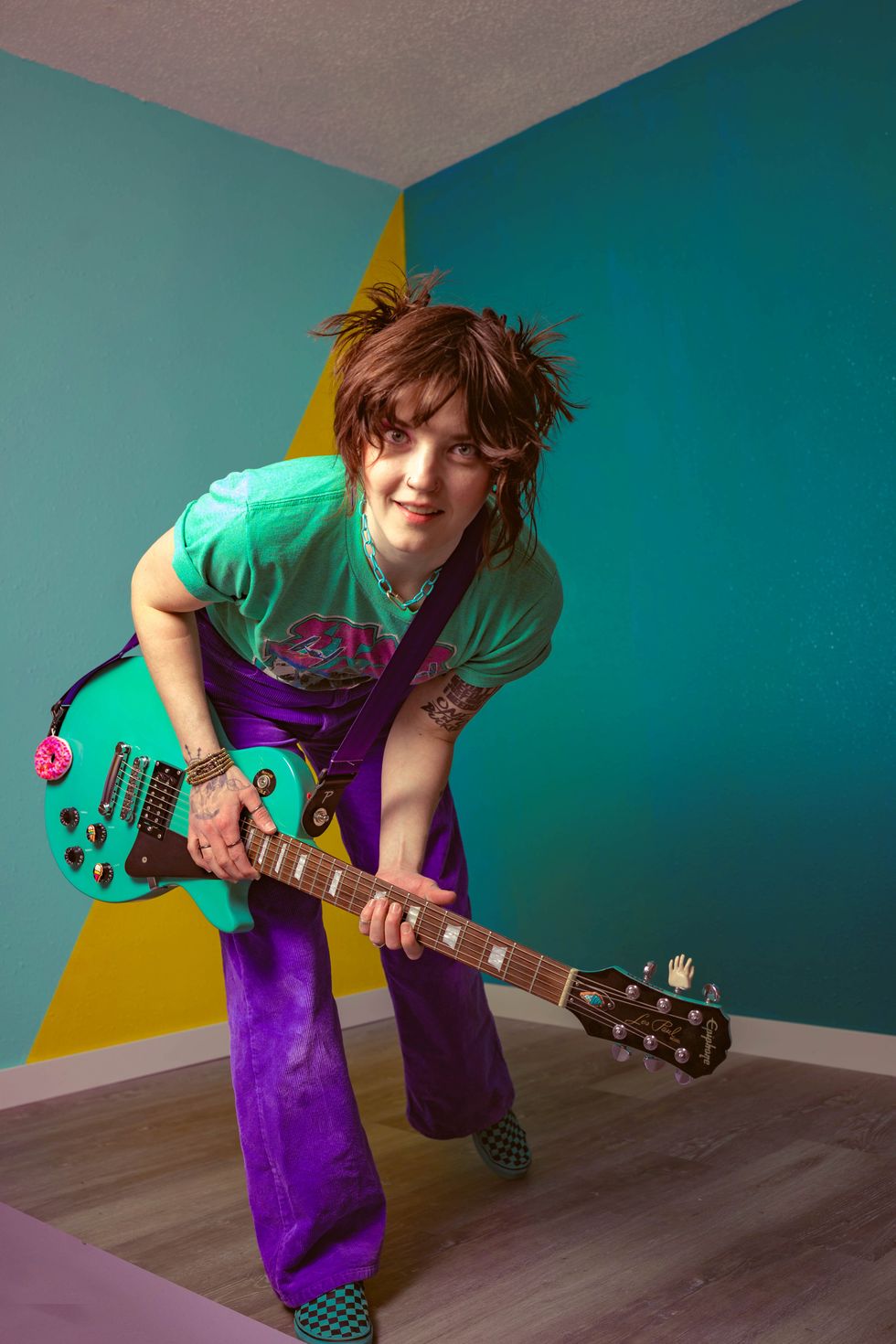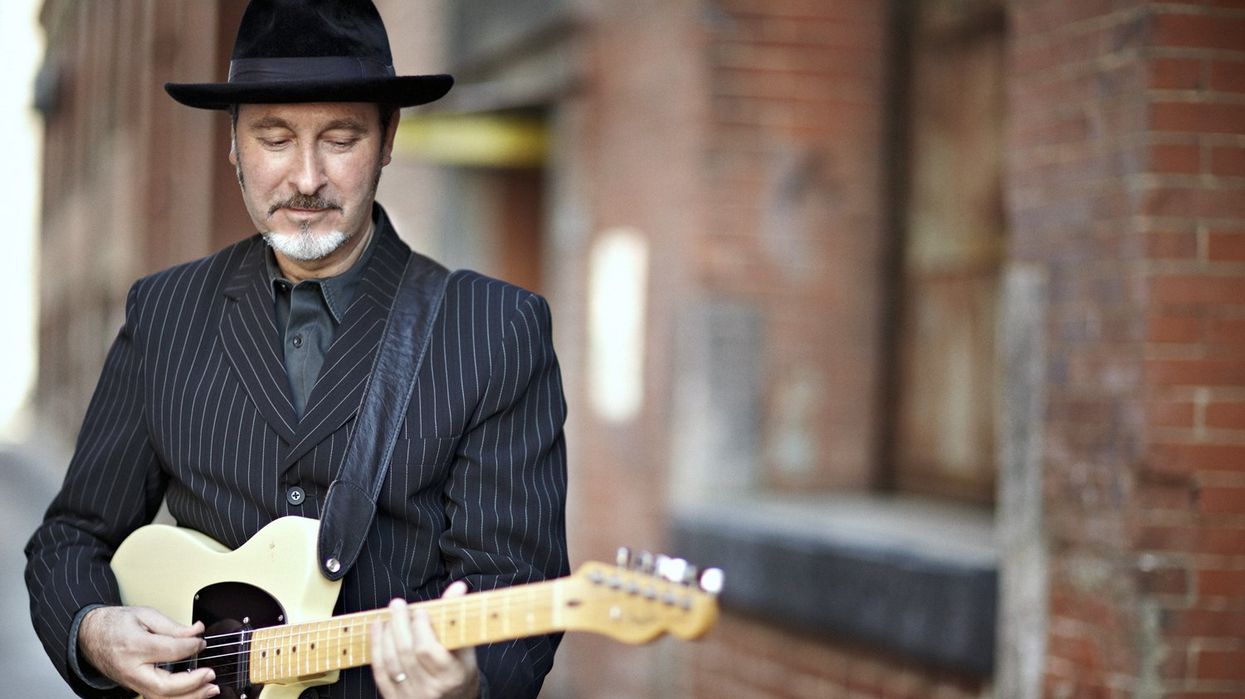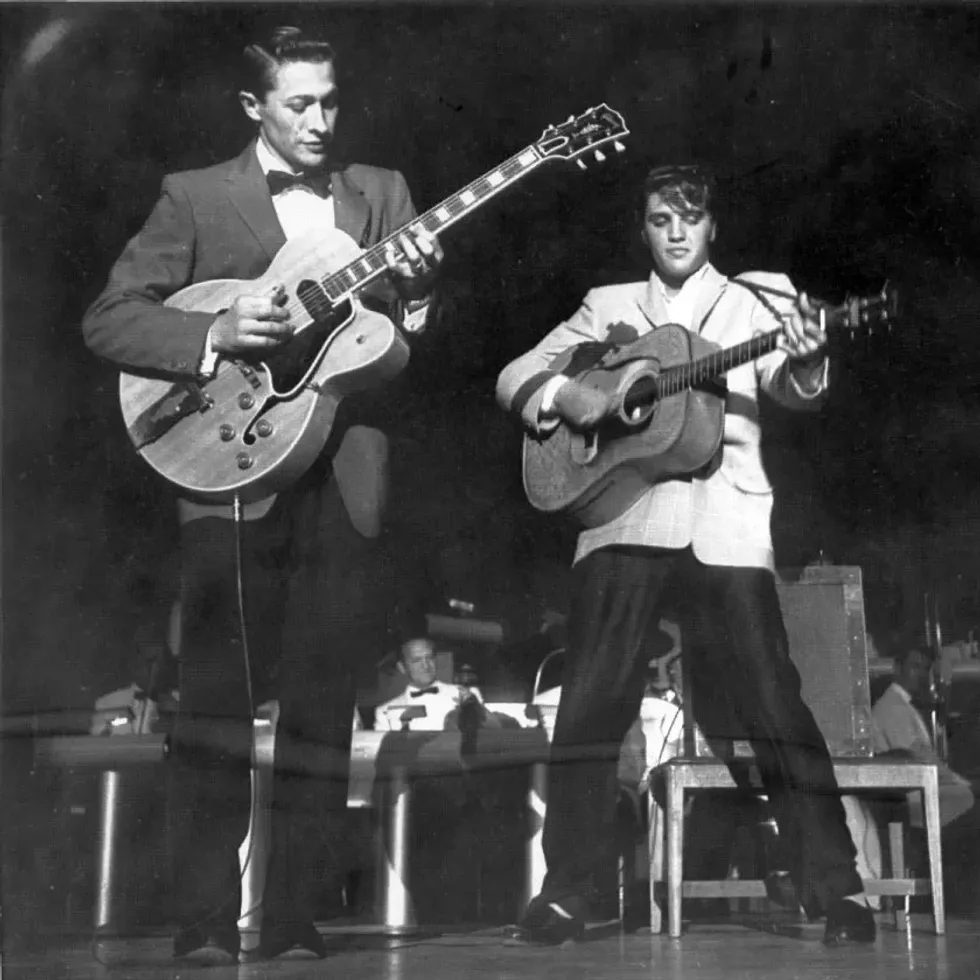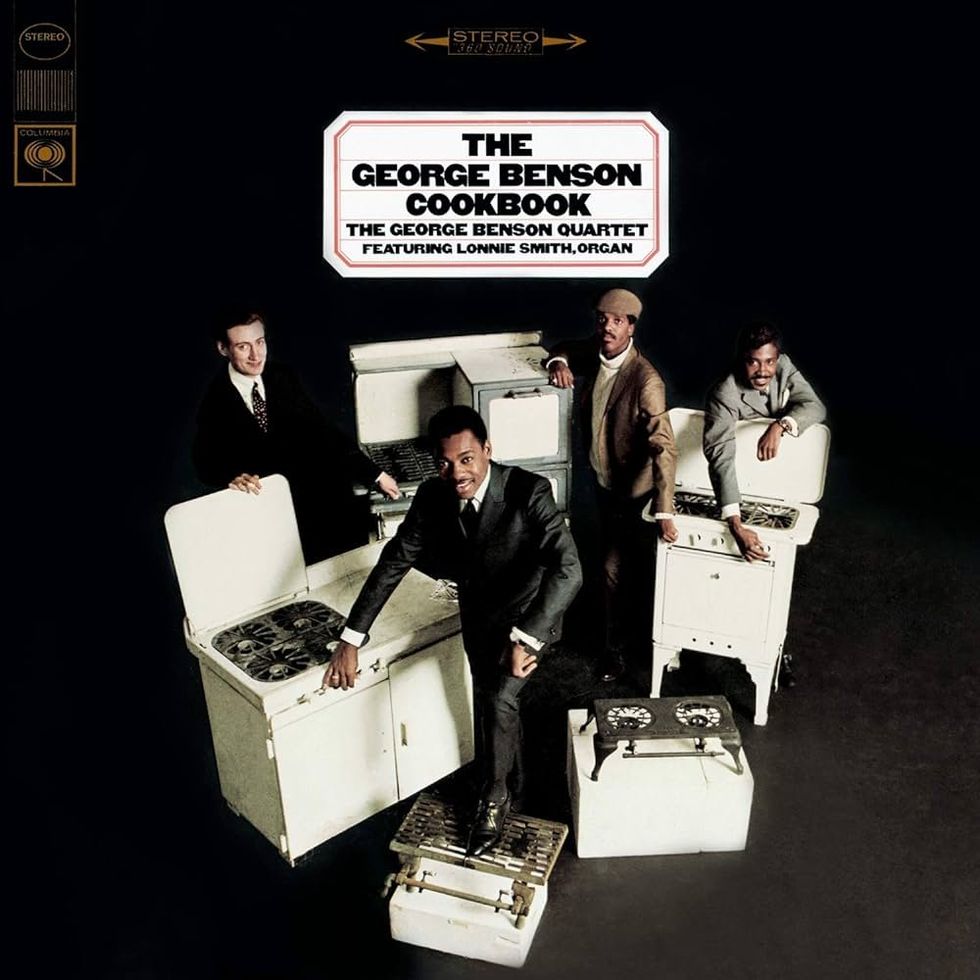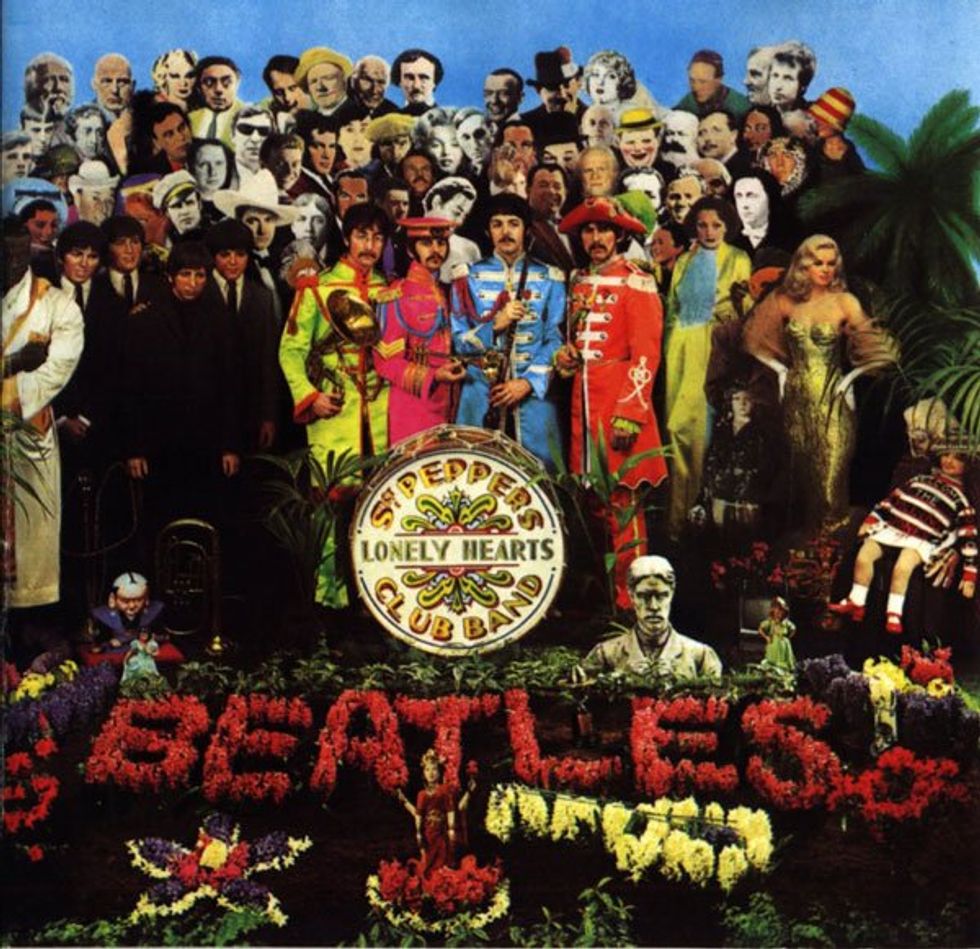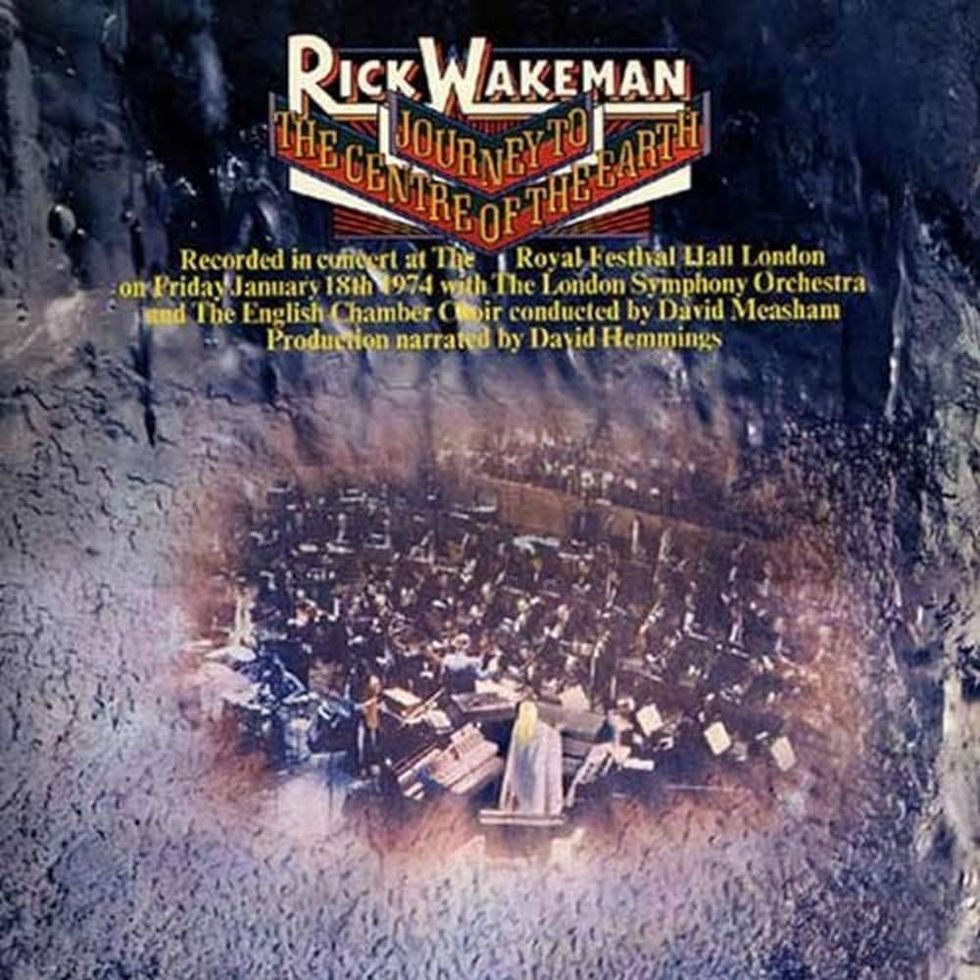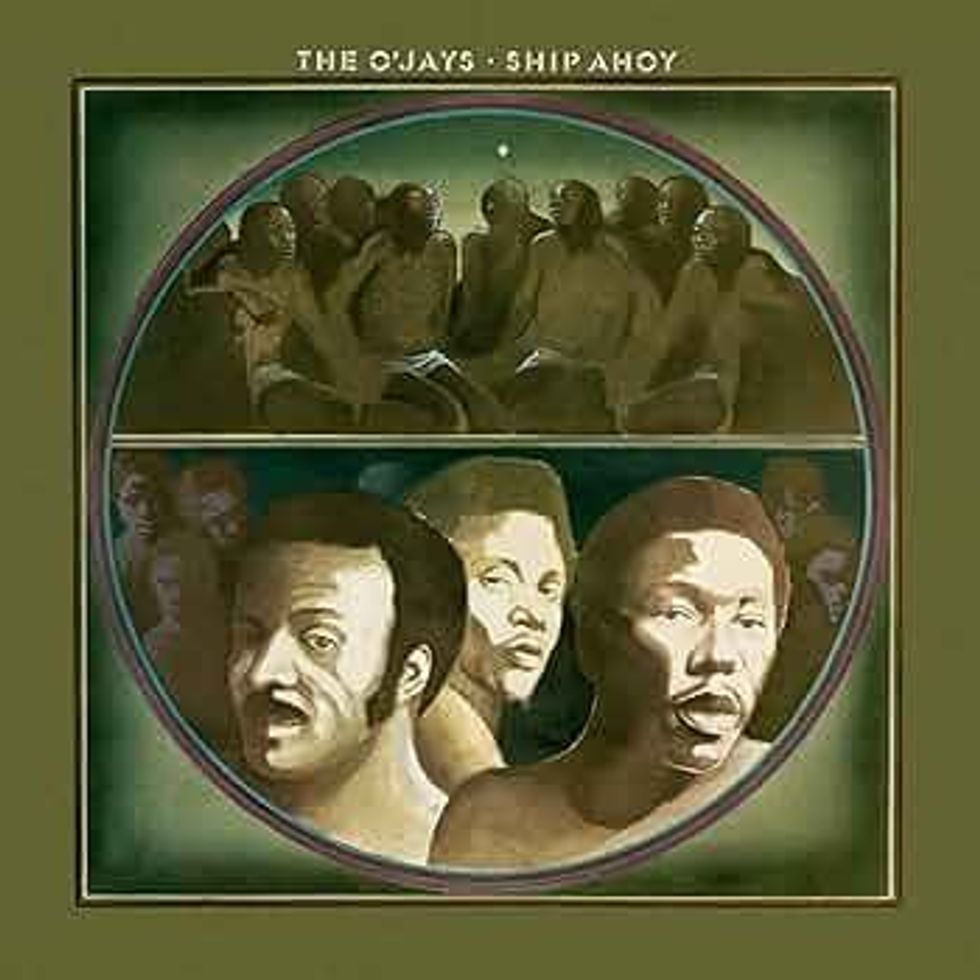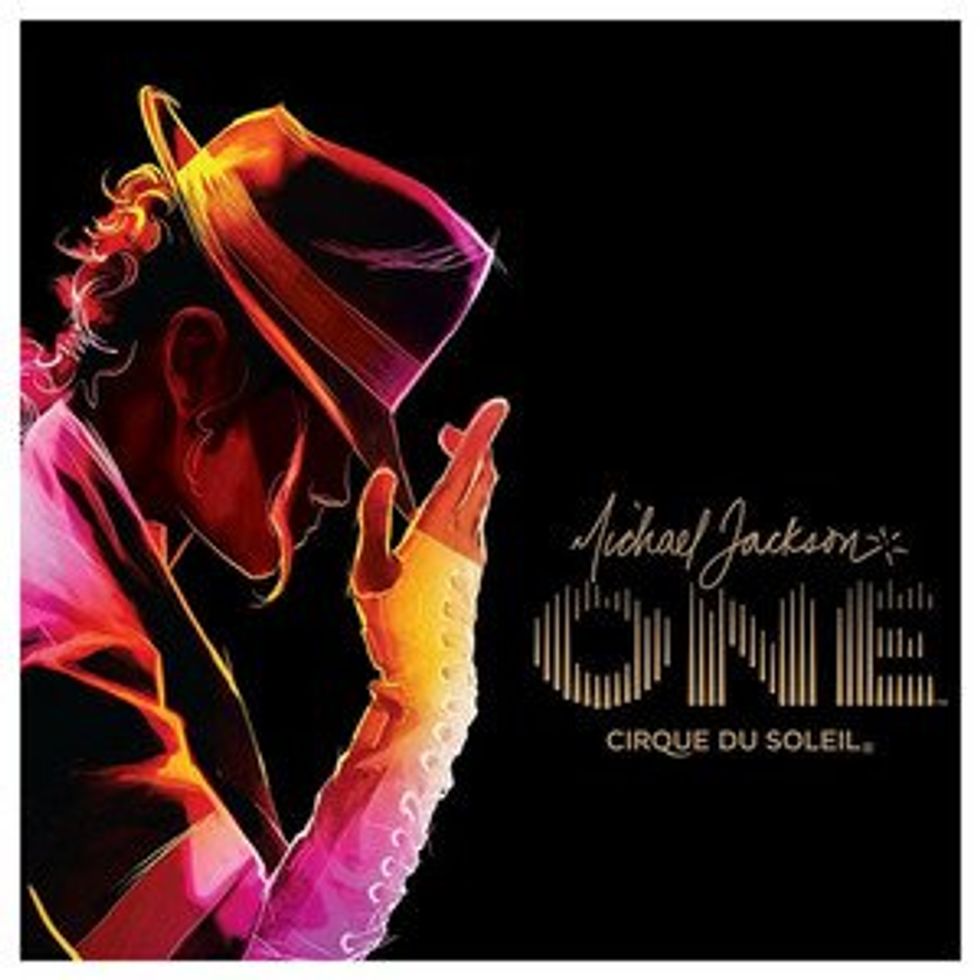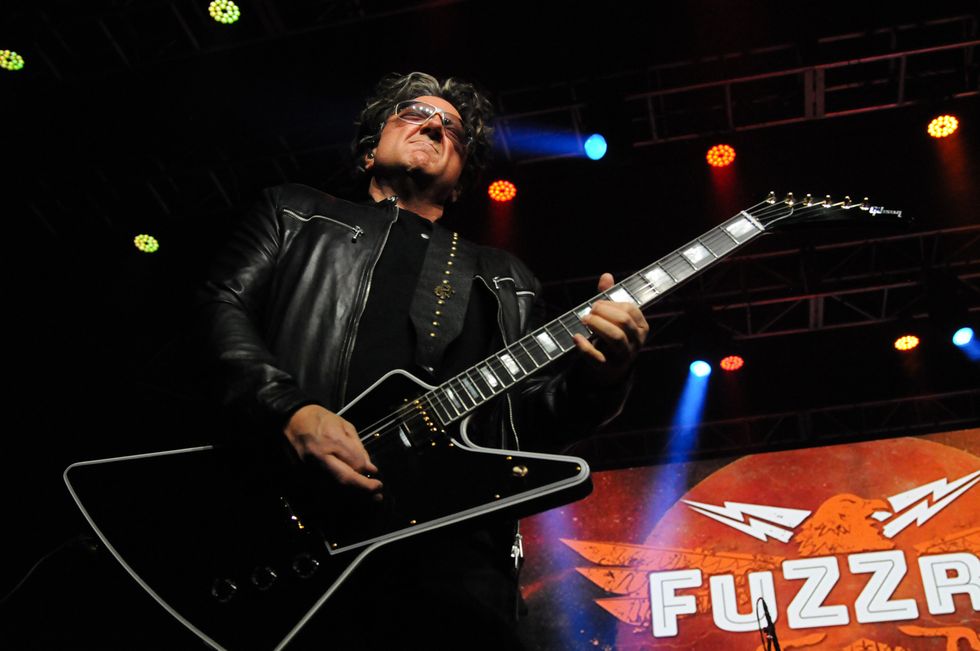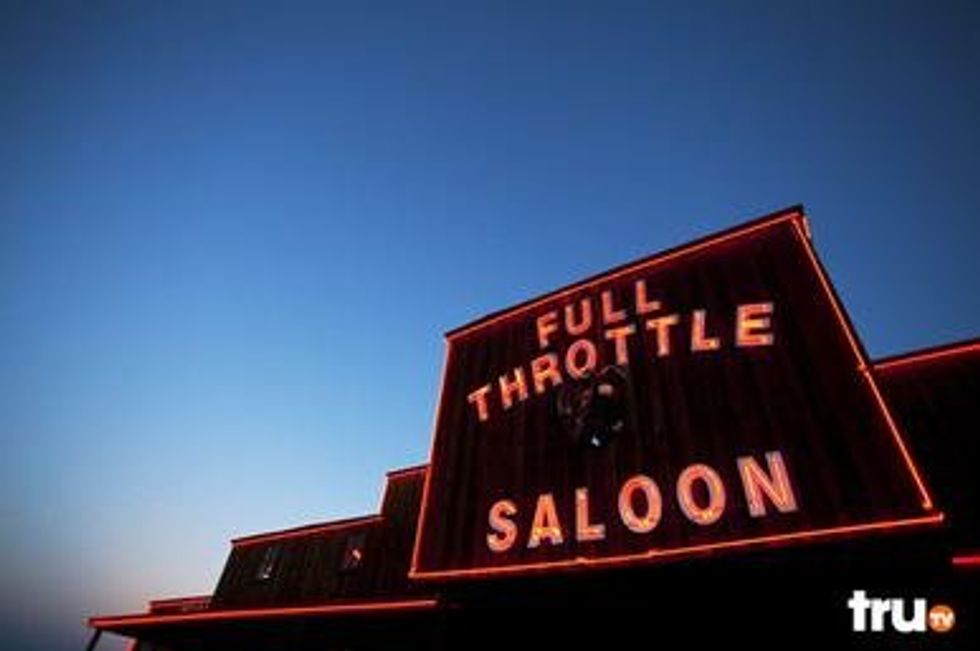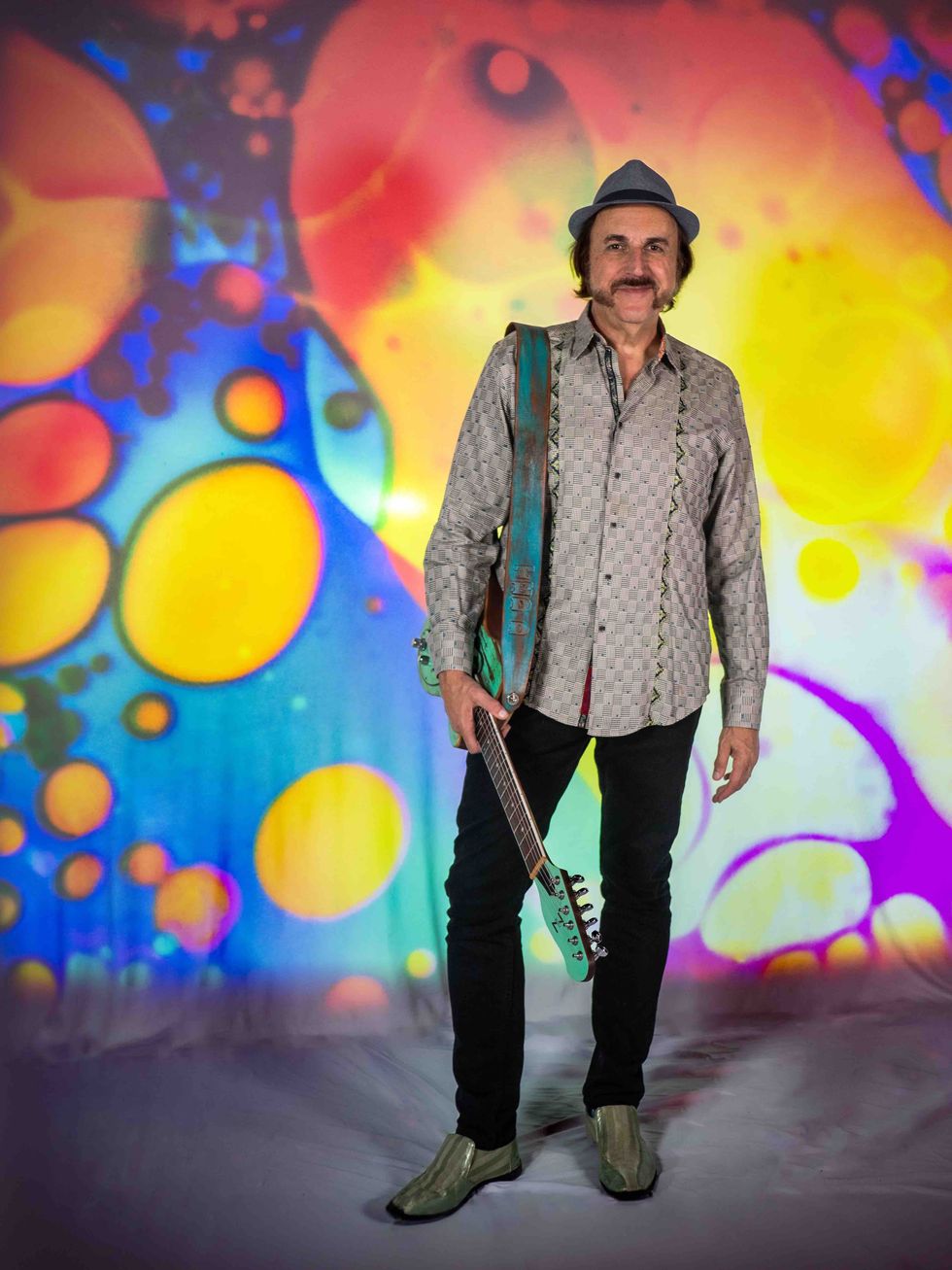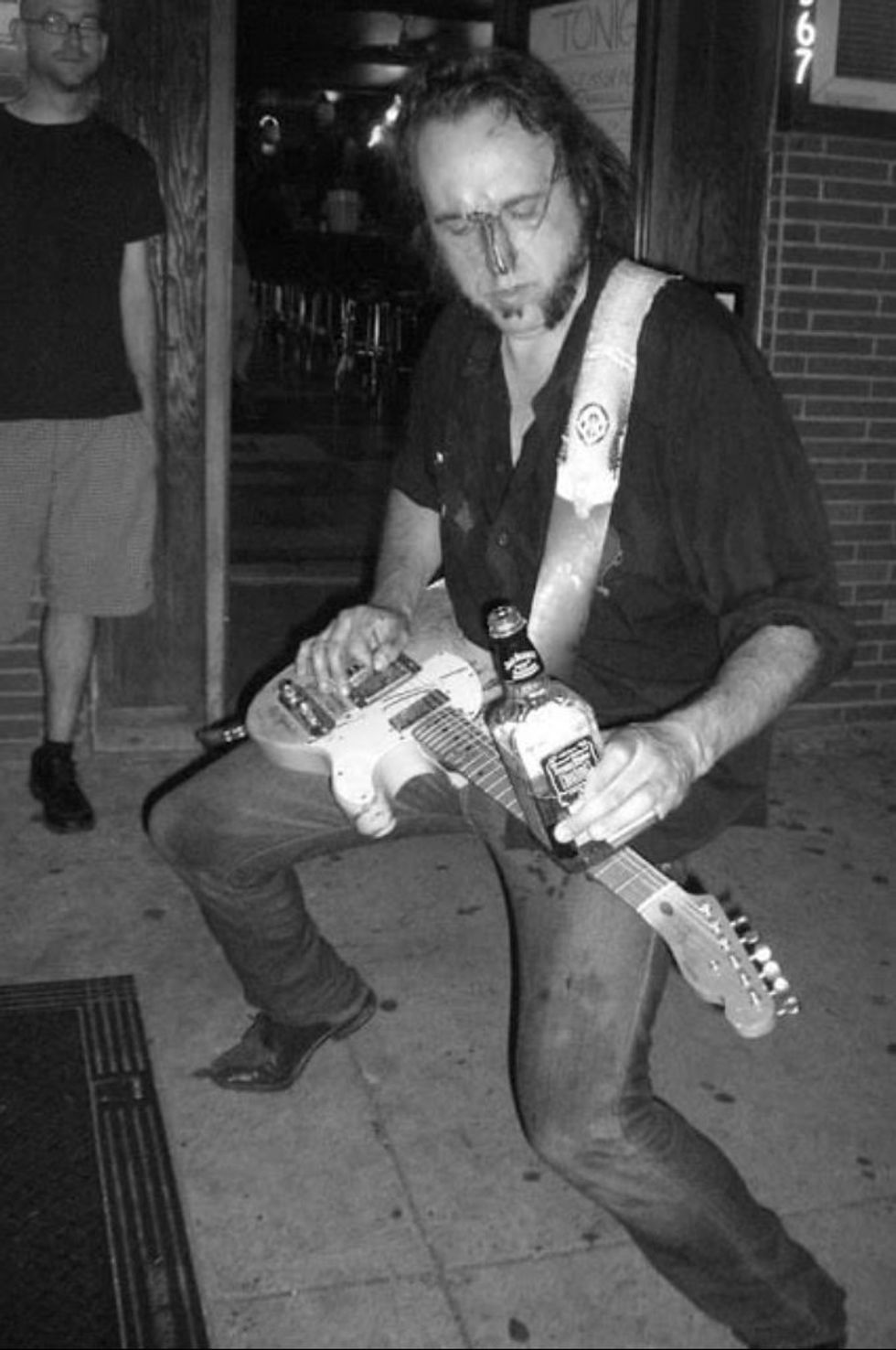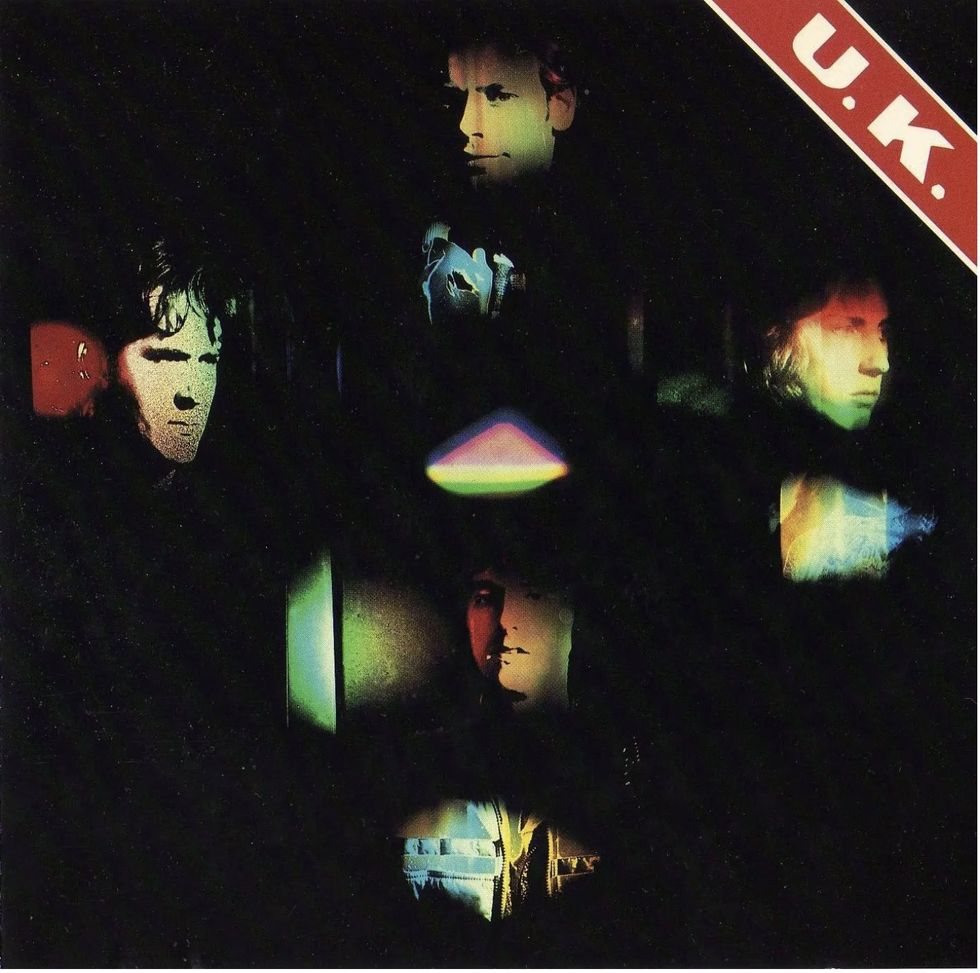Plus—our latest musical obsessions!
Question: What’s a riff that sounds easy, but is hard to play?
Dominic Miller—Sting
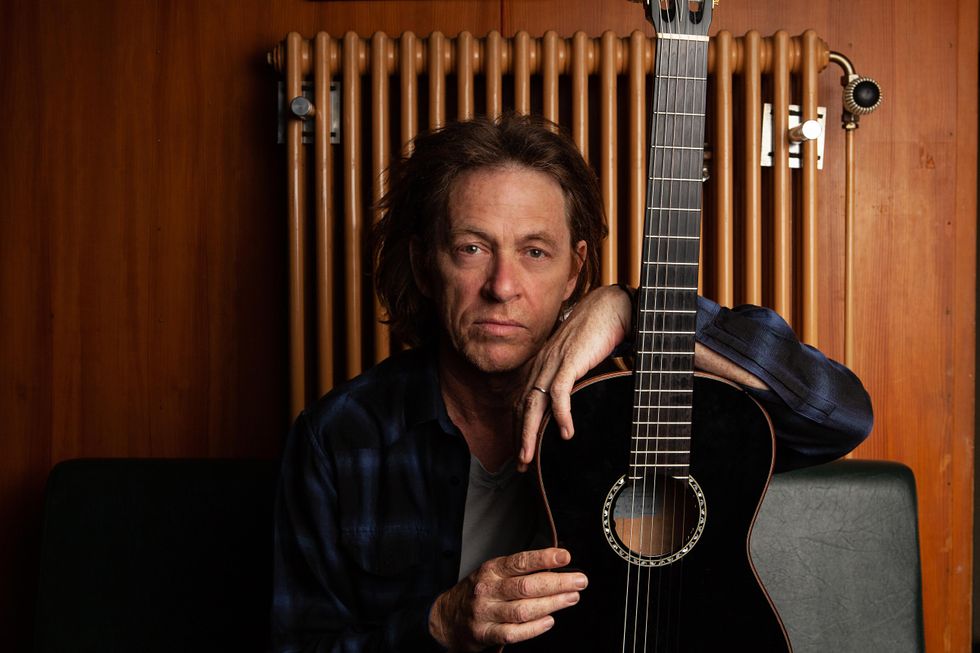
Photo by Christoph Bombart
A: “Angie” by the Rolling Stones. It’s one of those guitar parts that sounds so straightforward (A minor, E7, G, F, C, etc.), yet no one actually plays it correctly.
I was guilty of this, too, until I went forensic with it and discovered all these subtle nuances with every chord—suspended chords, hidden licks, passing bass notes, and more. It’s an exquisite guitar riff placing Keith Richards right up there, in my opinion.
Dominic Miller's Current Obsession:
I probably share my current obsession with most of my contemporaries, namely The Beatles: Get Back documentary. I can’t get my head around how their sound is so perfect, making me think hard about what it takes to make a band gel. It’s chemistry and theirs is #%^ing rocket science as far as I’m concerned because all the elements work so perfectly together, yet in isolation none of the parts sound like anything special. Even the timing and tuning are off a lot of the time. What you end up with is the truth. I envy non-musicians and music fans mostly because they feel the truth more than most musicians do. Perfectionism is the enemy in recording situations. Neil Young’s Harvest is proof of that. A sublime album because it’s just straight-up honest. I was 14 when I first heard it and it spoke to me as it still does now, but if I put my muso hat on it’s all over the place. Kudos to the producers of the era! Takeaway? Next time I’m in a studio, I want to first cut the tracks live, second, don’t obsess about perfect timing and articulation, and last, but not least, make sure we have a good time.
Albert Madariaga—Reader of the Month
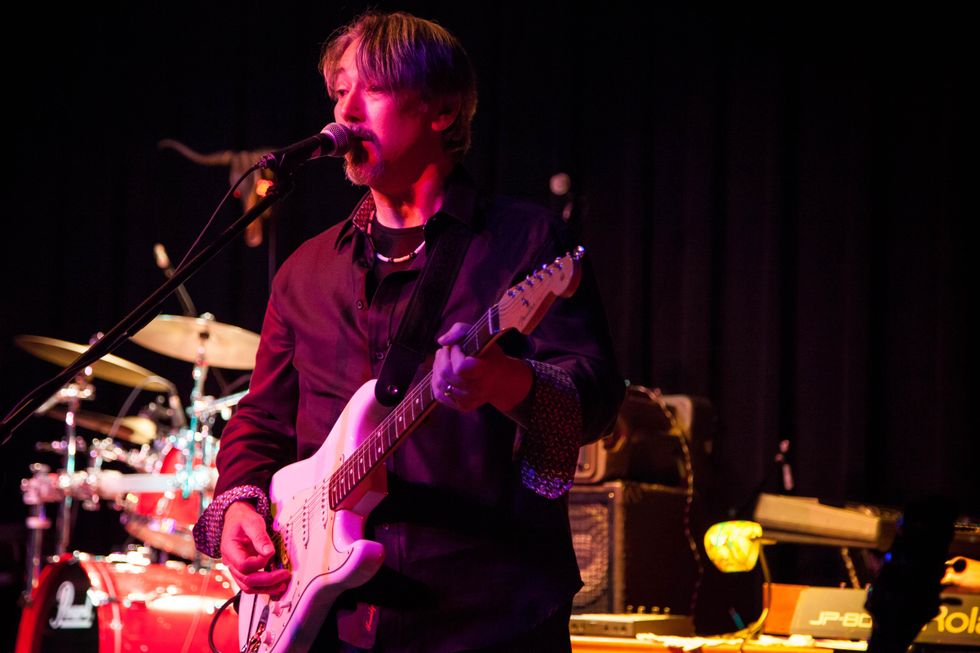
A: “Everybody Wants to Rule the World,” by Tears for Fears.
Tears For Fears - Everybody Wants To Rule The World (Official Music Video)
The opening riff is easy, sure, but getting the timing and the accents right and keeping it going is a bit challenging.
Albert Madariaga's Current Obsession:
I’m currently obsessed with a new amp head I’m having custom-built by an amp guru in North Texas. He asked me about my favorite tones, the guitars I play, my technique, how I use pedals, and styles of music. When he told me that he believes the best amp for me will be modeled after a specific Dumble (I’m not going to tell which one), it was a “Hell, yeah!” moment. He no longer builds amps for a living and is doing this one-off just for me. Gonna wrap it in purple tolex with a nice accompanying grill cloth then backlight the front panel. I can’t wait!
Jason Shadrick—Associate Editor
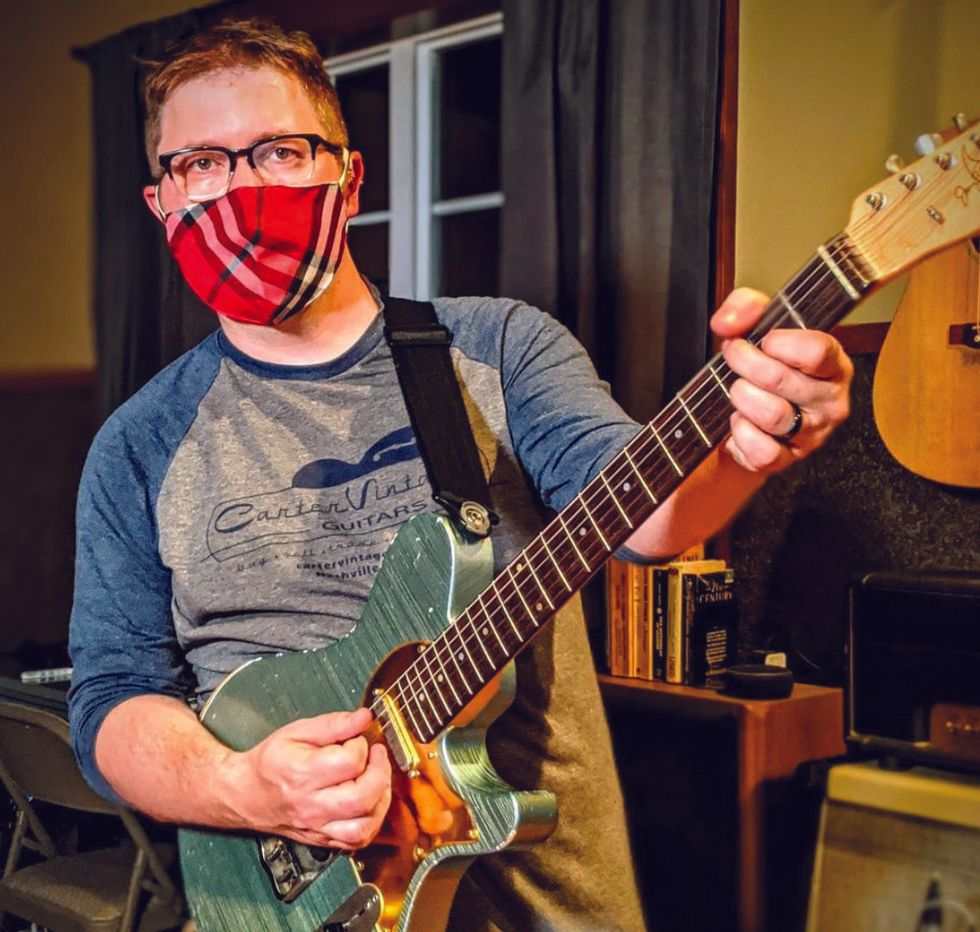
A: When I was younger, I had a hell of a time figuring out “Satellite” by Dave Matthews Band.
Dave Matthews Band - Satellite
On the surface, it’s a medium-tempo, single-note riff that sounded as if Andy Summers sat in with Bela Fleck. I distinctly remember when I got the first three notes—all stacked fifths—and felt like I really accomplished something. My real breakthrough was when I saw DMB on MTV. I recorded it on a VHS tape and watched it every morning before school until I could cop Dave’s fingering. I’m still not sure if it’s 100 percent, but it makes a great finger-stretching warm-up.
Jason Shadrick's Current Obsession:
I haven’t been able to stop listening to Tallgrass by Bret and Joslyn Boyer. It’s a collection of old-time folk and traditional tunes masterfully arranged for acoustic guitar and upright bass. Bret has been a friend and guitar hero for nearly 20 years and his inventive playing doesn’t browbeat you with overly complex feats of technical mastery or dense harmony—even though he can play that card when needed. The father-daughter duo’s sole focus is the song, and that approach has become all too rare.
Pete Thorn—Contributing Writer
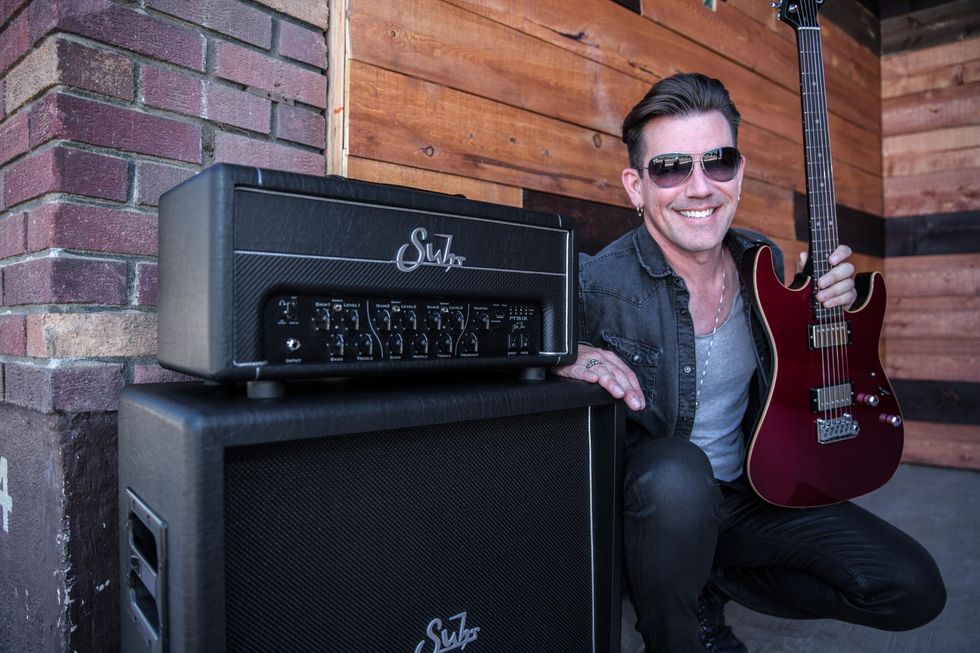
A: Van Halen, “Beautiful Girls.” This one swings HARD. To get the feel and the duration of the notes correct is a challenge.
Van Halen - Van Halen II - Beautiful Girls
You have to skip between the strings quite a bit and mute the notes just right, both with your left hand and your right, like when he clips short the open E and B strings, as a dyad, “Bang a Gong” style. And when he bounces in the intro from the A-string riff to the A5 dyad on the G and D strings, down to the F# on the low-E string—all tight, groovy, and seamless! It’s got a groove, a swing, a pocket that is super deep. And you have to use your guitar volume knob to clean up in the verses! It’s very dynamic. Such great rhythm guitar playing, interspersed with bursts of Eddie’s super-fun lead stylings! “I’m The One” is another super-deep swung groove that almost no one can play correctly! But I chose “Beautiful Girls” because no one ever mentions it as a “difficult to play” riff, even though I think it really is!
Pete Thorn's Current Obsession:
The new Failure album, Wild Type Droid. They’re always stretching, within the rock genre … they never stagnate. Great songs, mixed with awesome production. I toured with Kellii Scott, the drummer, in a band called Blinker the Star for a while, and he’s one of the grooviest, deep-pocket rock drummers I’ve ever played with. He’s very deliberate with his playing, like Dave Grohl. I love that style of rock drumming. No BS, just POWER. Great fills that support the song. And Ken Andrews is a force to be reckoned with all the way around, as a writer, player, and producer/engineer/mixer. Give it a spin!




